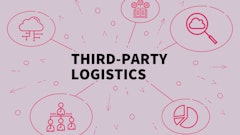
Safety has become a hot-button issue as recent strikes and tragic accidents are making headlines alongside production peaks. While some of the more established groups like the UAW have been able to leverage the power of a union to initiate change when it comes to pay and safety, there is a large crop of workers silently suffering, afraid or unable to speak out about workplace conditions. What many have in common is their ethnic background.
Ethnicity is an intersectional identity, often coinciding with class or income, degree of citizenship and language. For example, Hispanic people represent 14% of the frontline workforce, and 85% of Latino frontline workers are immigrants, likely indicating a lower level of English proficiency. The Bureau of Labor Statistics also finds foreign-born workers were more likely than native-born workers to be employed in service occupations; natural resources, construction, and maintenance occupations; and production, transportation, and material moving occupations. These are the jobs where safety risks and ergonomic injuries are most prevalent.
Why does this matter? As employers attempt to create a proactive safety culture, they offer programs aimed at engaging employees through methods such as hazard reporting. Language and literacy skills are significant barriers to these types of programs if they aren’t offered in the necessary language and with visual aids. Forms with lots of words written only in English can be a deterrent to some employees. Organizations must also understand the role of psychological safety in their various ethnic groups. Some may perceive the reporting of hazards as a potential threat to their employment regardless of if the reporting is anonymous or not.
In the past few years, industries such as warehouses and distribution centers have developed a rather negative reputation for neglecting to invest in worker safety. Many find themselves reacting to tragic accidents that occur or fines from OSHA sparked by an employee injury or complaint. Miraculously, and at the risk of digressing, not even the money these organizations can save in worker’s compensation has been incentive enough to answer employees’ calls for better safety and injury prevention measures.
The recent example of the UAW’s victory is a strong proof point that having an infrastructure through which to voice concern is paramount. While the auto strike was more geared towards fair compensation, the lesson is the same: when workers have a voice, they can fight for better treatment. The problem is, not all industrial workers are included in unions.
This connects once more to the problem at hand – those workers without voices are not flagging safety concerns. The language barrier, of course, is one reason. It can be exponentially more difficult to communicate about safety hazards and injury risk in another language. Add in the fact that about a third (34%) of immigrants say they have been criticized or insulted for speaking a language other than English since moving to the U.S. It’s clear that speaking as a non-white person can be inherently unsafe.
In addition to the disadvantages that exist when you cannot properly communicate due to a language barrier, many workers in this ethnic demographic do not feel empowered to speak about safety due to their current state of citizenship. With a combination of security concerns, federal policies and otherwise, it’s not shocking to hear that so many non-white industrial workers will bite their tongue on flagging a critical safety hazard or malpractice just because they don’t want to ruffle feathers with their employer.
The impact of this is staggering. For one, we are seeing the same types of injuries that have persisted for the past 30+ years at an even higher volume. Since the pandemic, in logistics, transportation, and distribution, there has been a rise in musculoskeletal injuries like strains, sprains, muscle pulls or worse. Over time, these injuries contribute to wear and tear and result in long-term health complications. Plus, they are costly. According to the BLS, the median usual weekly earnings of foreign-born full-time wage and salary workers were $945 in 2022, compared with $1,087 for their native-born counterparts. In the case of undocumented citizens, oftentimes the only option is to dip into their own pocket to cover the cost of an injury. When faced with that choice, many don’t address the injury at all.
Ensuring employees’ voices are heard can mitigate these risks and ensure safe working conditions regardless of ethnic background. To achieve this, employers can create a better system for sourcing employee feedback. At the bare minimum, creating a medium through which to hear what employees have to say – even anonymously – is immensely important. What’s more, employee feedback can also lead to quick solutions. If a worker who's day-to-day involves repetitious lifting, they can exercise their voice to call out a need for more comprehensive training on form, or even suggest a better process or tool to make operations more safe and more efficient.
Employers must also empower workers with tools to understand their movements and individualized safety risks. After all, all bodies are different. There’s plenty of technology, like computer vision or wearable sensors, out there that can help employees understand how they are increasing their risk of injury before they get hurt. This is an easy way to give employees more oversight when it comes to how they’re moving their bodies on the job, without making them feel psychologically unsafe.
When employees in industrial jobs don’t have a well-thought-out structure and safe space to communicate, they undergo higher rates of ergonomic injury. Employers need to be proactive about sourcing information from their employees – and most importantly, ensure workers feel safe to voice concerns no matter what societal challenge their class or ethnic background presents.


























